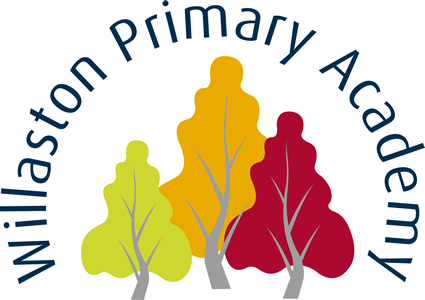Computing
At Willaston, our vision is to provide enable children to achieve their highest potential through a wide range of quality learning experiences in an environment that is inspirational and stimulating, yet safe and secure. Through our computing curriculum we provide stimulating cross-curricular learning opportunities to prepare our children with the skills and knowledge they need to navigate their way, both successfully and safely, through a digital world.
When planning and teaching computing at Willaston, we believe that it is an essential part of the curriculum; a subject that not only stands alone but is woven and should be an integral part of all learning with ample opportunities for our children to practise their skills and develop their understanding and experience technology in their daily learning. Willaston children are part of the digital age and we therefore strive to ensure that our pupils have the capabilities and knowledge to succeed in the digital world both today and in their future lives.
Our computing curriculum is divided into four key areas which are taught to ensure progression of skills but also maintaining a set of core skills that are fundamental to the learning of our children, year on year.
Core Skills: These are the practical skills children require to access technology successfully at Willaston. They begin with the simple operation of the common devices in EYFS and progress to editing and saving of files and documents or use of hotkeys on a keyboard in year 6. Teachers teach these to our children at the start of the year and this ensures that children can access equipment confidently and provides them with a solid foundation of skills.
Computer Science: The core of computing at Willaston is computer science, in which our children are taught the principles of information and computation, how digital systems work and how to put this knowledge to use through programming. In EYFS we begin with using simple instructions to control a device and build on this through KS1 and KS2 to enable our children to think and solve problems in computational terms, have repeated opportunities to write and develop their own programs and be able to explain the concepts behind this.
Information Technology: At Willaston, we ensure that children have a diverse and frequent opportunity to experience and use different forms of information technology throughout their time in school to produce a range of digital content. This begins in EYFS where children have access to iPads and programmable toys and progresses to include a broader range of digital devices and software in KS2.
Digital Literacy: This refers to our children’s ability to understand the common uses of technology, what it means to be a discerning digital citizen, to collaborate in a digital world and most importantly, how to stay safe. In Early Years, children will be exposed to internet safety as they explore the world around them. Our children are taught how to use technology safely, respectfully and responsibly; recognise acceptable/unacceptable behaviour; identify a range of ways to report concerns about content and contact. Our children learn about the opportunities presented by networks and collaboration and how to communicate effectively using technology.
We encourage our children to enjoy and value the curriculum we deliver. We will constantly ask the WHY behind their learning and not just the HOW. We want learners to discuss, reflect and appreciate the impact computing has on their learning, development and wellbeing. Finding the right balance with technology is key to an effective education and a healthy life-style. We feel the way we implement computing helps children realise the need for the right balance and one they can continue to build on in their next stage of education and beyond. We encourage regular discussions between staff and pupils to best embed and understand this. The way pupils showcase, share, celebrate and publish their work will best show the impact of our curriculum. We also look for evidence through reviewing pupil’s knowledge and skills digitally through tools like Seesaw and observing learning regularly. Progress of our computing curriculum is demonstrated through outcomes and the record of coverage in the process of achieving these outcomes.
